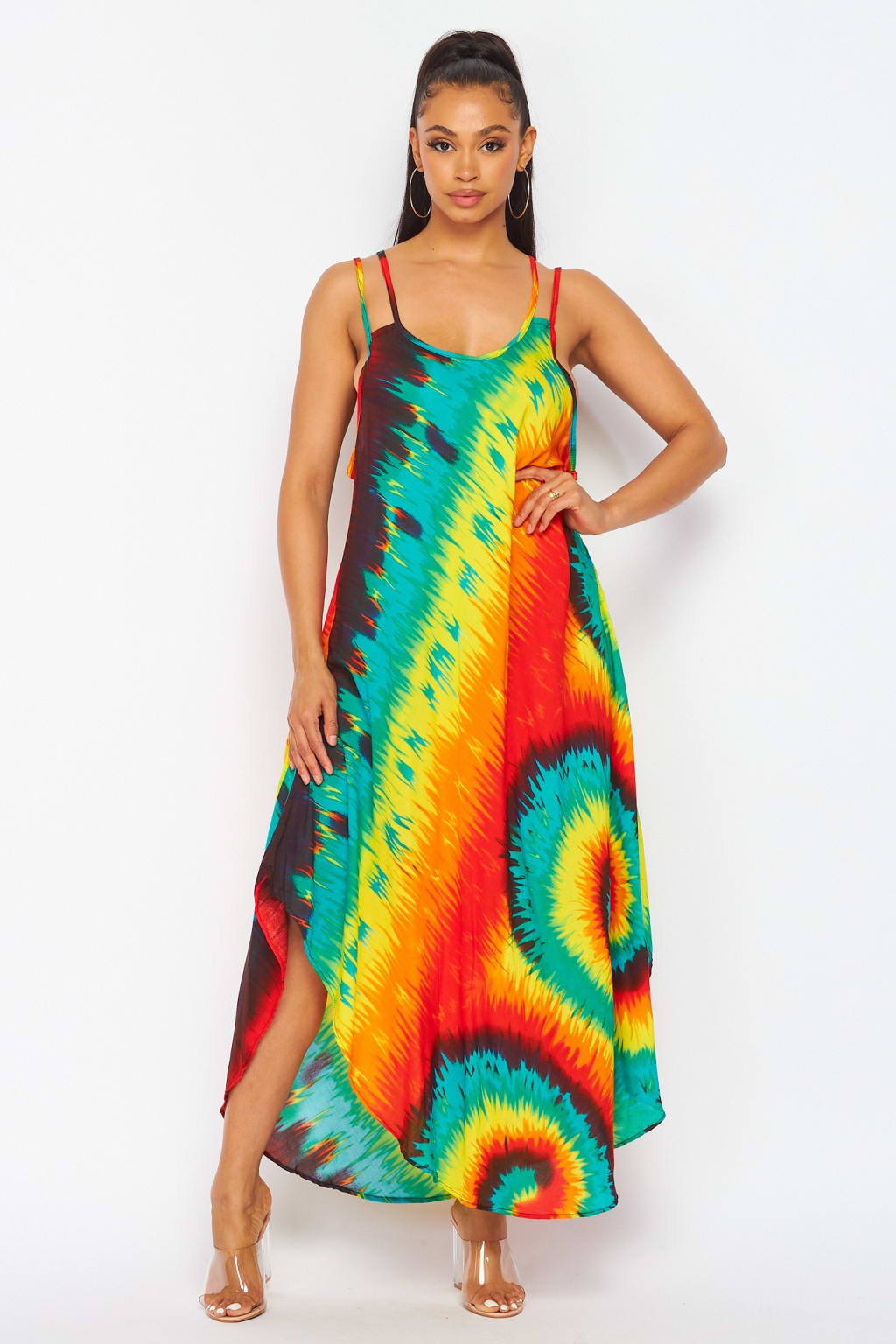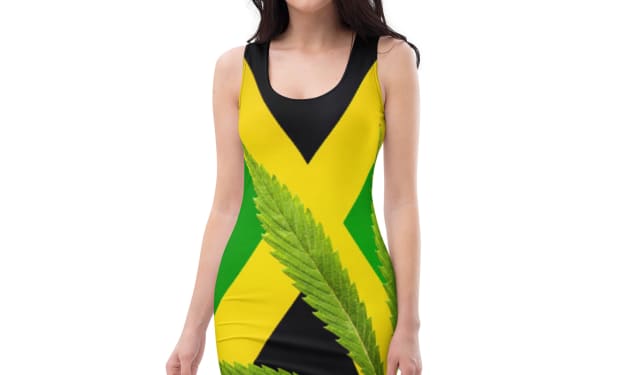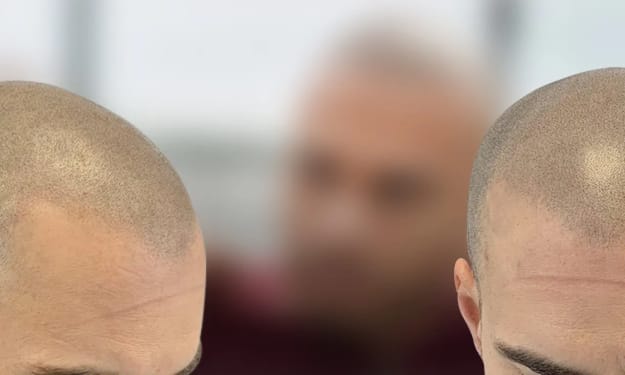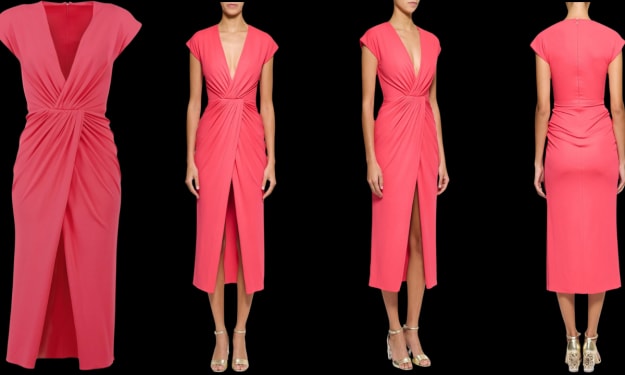Rastafarian Clothing: Bridging the Gap Between Spirituality and Style
Bridging the Gap: Exploring the Harmonious Fusion of Spirituality and Style in Rastafarian Clothing

Rastafarianism is a dynamic spiritual and cultural movement that originated in Jamaica in the early 20th century. It encompasses a profound belief system, music, art, and a distinctive fashion style. Clothing plays a significant role in Rastafarian culture, serving as a visual expression of the movement's spirituality and identity. In this blog post, we will delve into the fascinating connection between spirituality and style in Rastafarian clothing.
Rastafarianism emerged in the 1930s, inspired by the teachings of Marcus Garvey and the coronation of Ethiopian Emperor Haile Selassie I. It embodies a profound spirituality rooted in the belief that Emperor Selassie is the earthly manifestation of God (Jah). Rastafarianism embraces principles such as social justice, equality, and the liberation of African descendants. It has influenced various aspects of Jamaican society, including music, language, and, notably, fashion.
Clothing holds great importance in Rastafarian culture. It serves as a visual representation of Rastafarian identity, spirituality, and cultural pride. Rastafarian clothing reflects a reverence for African heritage, a rejection of Eurocentric standards, and a celebration of natural beauty. Through their attire, Rastafarians express their connection to Jah, their commitment to righteousness, and their cultural roots.
The purpose of this blog post is to delve deeper into the intricate relationship between spirituality and style within Rastafarian clothing. We will explore the symbolic meanings behind specific garments, colors, and accessories. Additionally, we will examine how Rastafarian fashion empowers individuals and serves as a visual expression of their faith, cultural identity, and social consciousness. By understanding the connection between spirituality and style, we can gain a deeper appreciation for the significance of Rastafarian clothing within the broader Rastafarian movement.
As we embark on this exploration, let us open our minds to the rich cultural heritage and spiritual depth of Rastafarian fashion. Together, we will unravel the threads that weave spirituality and style into the vibrant tapestry of Rastafarian clothing, gaining insights into the beauty and significance of this unique form of self-expression.
The Roots of Rastafarian Clothing
Rastafarianism traces its roots back to Jamaica in the early 20th century. It emerged as a response to the social and economic conditions faced by African descendants in Jamaica, seeking to reclaim their African heritage and assert their identity. The movement gained momentum with the teachings of Marcus Garvey, a Jamaican activist and advocate for Black empowerment. Garvey's emphasis on self-reliance, African pride, and the repatriation of Black people to Africa laid the foundation for Rastafarian beliefs.
Central to Rastafarian clothing is a deep connection to African heritage. Rastafarians draw inspiration from various African cultures, incorporating traditional elements into their fashion. Traditional African garments, such as robes and tunics, inspire the flowing and loose-fitting garments often worn by Rastafarians. The use of natural fabrics like cotton and linen is also reminiscent of African textile traditions.
Colors hold profound symbolism in Rastafarian clothing. Red, gold, and green are the iconic colors associated with Rastafarianism. Red represents the blood of martyrs, the struggles of African ancestors, and the determination to overcome oppression. Gold symbolizes the wealth and prosperity of Africa. Green signifies the lush vegetation of Ethiopia, the spiritual homeland of Rastafarians. These colors are prominently featured in clothing, accessories, and the iconic Rastafarian flag.
Dreadlocks, or "dreads," are an essential aspect of Rastafarian identity and fashion. Inspired by the biblical Nazarites and the concept of letting hair grow naturally, dreadlocks are symbolic of spiritual enlightenment, strength, and the unification of the individual with nature. Rastafarians view their hair as a physical manifestation of their spiritual connection to Jah. Dreadlocks are often adorned with beads, shells, and colorful accessories, adding further personal and cultural expression to Rastafarian fashion.
The roots of Rastafarian clothing delve deep into Jamaican history and the embrace of African heritage. From the influence of Marcus Garvey's teachings to the incorporation of traditional African aesthetics, Rastafarian fashion serves as a visual testament to the movement's cultural pride and spiritual beliefs. The symbolic use of colors, particularly red, gold, and green, and the significance of dreadlocks further contribute to the richness and distinctiveness of Rastafarian clothing as an expression of spirituality and cultural identity.
The Intersection of Spirituality and Style in Rastafarian Clothing
Rastafarian clothing emphasizes a connection to nature and a respect for the environment. Natural fabrics such as cotton, hemp, and linen are preferred, reflecting the movement's commitment to sustainability and simplicity. These fabrics allow for breathability, comfort, and a closer alignment with the natural world. Rastafarians often prioritize clothing that is free-flowing, loose-fitting, and allows for ease of movement.
Rastafarian clothing serves as a canvas for sacred symbols and imagery that hold deep spiritual significance. The Lion of Judah, representing Emperor Haile Selassie I, is a prominent symbol featured on clothing and accessories. It signifies strength, majesty, and the divine connection to Jah. Other symbols such as the Ethiopian flag, the Ankh, and the Ethiopian cross may also be incorporated, further emphasizing the spiritual beliefs and cultural heritage of Rastafarianism.
Rastafarian clothing celebrates African heritage through the incorporation of traditional patterns and motifs. African-inspired prints, such as Kente, Adinkra symbols, and batik designs, add vibrancy and cultural richness to garments. These patterns serve as visual representations of ancestral wisdom, spirituality, and unity. By infusing African aesthetics into their attire, Rastafarians not only express their cultural pride but also honor their African roots.
Balancing modesty and self-expression in Rastafarian attire
Rastafarian clothing strikes a balance between modesty and self-expression. While embracing a more modest approach to attire, Rastafarians infuse their personal style and creativity into their outfits. Women may opt for long skirts or dresses, often made from natural fabrics, reflecting a sense of femininity and modesty. Men may wear loose-fitting pants and shirts, accessorized with vests, hats, or head coverings. Rastafarian fashion allows individuals to express their unique identity while adhering to the movement's values of humility and self-respect.
The intersection of spirituality and style in Rastafarian clothing is a harmonious fusion. By embracing natural fabrics, incorporating sacred symbols and imagery, infusing African-inspired patterns and motifs, and finding the balance between modesty and self-expression, Rastafarians create clothing that reflects their deep spiritual beliefs, cultural pride, and connection to nature. Through their attire, Rastafarians communicate their spiritual journey, cultural heritage, and commitment to living in harmony with themselves and the world around them.
Rastafarian Fashion Icons and Influences
Rastafarian fashion has been shaped by influential figures within the movement who have become icons of style. These individuals embody the spirit of Rastafarianism and have contributed to the development of Rastafarian fashion. Icons such as Bob Marley, Peter Tosh, and Bunny Wailer not only made significant contributions to reggae music but also became synonymous with Rastafarian fashion aesthetics. Their unique sense of style, including their dreadlocks, colorful attire, and accessorizing with hats and scarves, have influenced subsequent generations of Rastafarians and individuals around the world.
Reggae music, a vital element of Rastafarian culture, has played a crucial role in shaping Rastafarian fashion trends. Jamaican artists, through their music videos, album covers, and performances, have showcased distinct Rastafarian fashion aesthetics to a global audience. The vibrant and expressive stage outfits of artists like Burning Spear, Dennis Brown, and Damian Marley have not only become iconic within the reggae community but have also influenced broader fashion trends. Their fusion of Rastafarian elements with contemporary streetwear and urban fashion has created a unique and recognizable style.
Rastafarian clothing has transcended its origins to have a significant impact on the broader fashion industry and popular culture. Elements of Rastafarian fashion, such as the use of colors, dreadlocks, and African-inspired prints, have been incorporated into mainstream fashion. Designers and brands have drawn inspiration from Rastafarian aesthetics, incorporating them into their collections. The fashion world has embraced the vibrancy and cultural richness of Rastafarian clothing, leading to collaborations and partnerships that celebrate and promote the movement's unique style.
Moreover, Rastafarian fashion has become a symbol of resistance and cultural identity, inspiring individuals worldwide. People from diverse backgrounds have embraced elements of Rastafarian clothing as a form of self-expression and as a way to connect with the movement's ideals of freedom, spirituality, and social justice. Rastafarian fashion has become an influential force in popular culture, transcending boundaries and spreading its message of unity and cultural pride.
The icons of Rastafarian culture, along with the influence of reggae music and the broader impact on the fashion industry and popular culture, have solidified Rastafarian fashion as a distinctive and influential style. It continues to inspire individuals, designers, and artists, serving as a visual representation of the Rastafarian movement's principles and cultural heritage. By blending spirituality, cultural pride, and artistic expression, Rastafarian fashion has become a powerful symbol of resistance, unity, and self-empowerment.
Rastafarian Clothing as a Form of Identity and Empowerment
Rastafarian clothing serves as a powerful tool for individuals to express their identity, spirituality, and cultural pride. By wearing Rastafarian garments, individuals embrace a visual representation of their beliefs and values. Rastafarian fashion allows individuals to authentically present themselves to the world, fostering a sense of empowerment and self-acceptance. It provides a means to celebrate African heritage, challenge societal norms, and stand proud in one's Rastafarian identity.
Rastafarian clothing has long been associated with countercultural movements, challenging mainstream societal norms and promoting social change. The adoption of dreadlocks, for instance, has been a form of resistance against Eurocentric beauty standards and a statement against assimilation. Rastafarian attire, with its bold colors, vibrant prints, and cultural symbols, defies conventional fashion norms and asserts a distinct cultural identity. Through their clothing, Rastafarians challenge the status quo, demanding recognition and respect for their beliefs and values.
Rastafarian clothing fosters a sense of unity and community among Rastafarians. By sharing common fashion aesthetics, Rastafarians can recognize one another and feel a sense of belonging. This shared visual language creates a bond that extends beyond geographical boundaries, connecting Rastafarians worldwide. Through their clothing, they express solidarity, cultural heritage, and the collective pursuit of social justice. Rastafarian fashion reinforces the notion that Rastafarianism is not merely an individual spiritual practice but a shared movement with a strong sense of community.
Rastafarian clothing empowers individuals to embrace their unique identity, express their cultural pride, and challenge societal norms. It serves as a form of self-expression, enabling Rastafarians to authentically present themselves to the world. By defying conventional fashion norms, Rastafarian clothing becomes a symbol of resistance and social change. Additionally, the shared fashion aesthetics create a sense of unity and community among Rastafarians, fostering connections and a shared purpose. Rastafarian clothing is not merely fabric and accessories; it is a manifestation of identity, empowerment, and the pursuit of social justice.
Contemporary Interpretations of Rastafarian Clothing
Rastafarian clothing has evolved and adapted to the contemporary fashion landscape, finding new expressions and interpretations in the global context. While traditional Rastafarian attire remains significant, there has been a surge of modern adaptations that fuse Rastafarian aesthetics with contemporary fashion trends. These adaptations reflect the changing tastes and preferences of individuals who identify with Rastafarianism or appreciate its cultural significance. From incorporating Rastafarian colors and symbols into casual wear to infusing traditional elements with urban street style, contemporary Rastafarian clothing embraces versatility and cross-cultural influences.
Rastafarian style has had a profound influence on various fashion genres, including streetwear, high fashion, and artistic expressions. The vibrant colors, bold prints, and cultural symbols associated with Rastafarian fashion have found their way into the mainstream fashion industry. Streetwear brands, in particular, have drawn inspiration from Rastafarian aesthetics, incorporating them into their collections. High fashion designers have also embraced Rastafarian influences, featuring elements such as dreadlocks, African-inspired patterns, and reggae-inspired prints in their runway shows. Additionally, artists and creatives often use Rastafarian fashion as a source of inspiration for their visual artworks and performances.
Rastafarian-inspired fashion trends have made a significant impact on mainstream culture. The vibrancy, individuality, and cultural richness of Rastafarian clothing have captured the attention of fashion enthusiasts around the world. Elements such as Rastafarian colors, African-inspired prints, and dreadlock hairstyles have become popular fashion choices, transcending cultural boundaries. Mainstream brands have incorporated Rastafarian-inspired elements into their designs, bringing the movement's aesthetics to a broader audience. This integration has contributed to the cultural diffusion and recognition of Rastafarian fashion as a distinctive and influential style.
Contemporary interpretations of Rastafarian clothing reflect a fusion of traditional elements with modern fashion sensibilities. As Rastafarian style continues to evolve, it finds new expressions and interpretations in the global fashion landscape. From streetwear to high fashion, Rastafarian influences can be seen in various fashion genres, influencing trends and inspiring artistic expressions. By embracing and adapting Rastafarian aesthetics, contemporary interpretations of Rastafarian clothing contribute to the movement's visibility and impact, making it a recognized and celebrated part of mainstream culture.
Conclusion
In conclusion, Rastafarian clothing serves as a powerful bridge between spirituality and style. The garments, accessories, and hairstyles associated with Rastafarian fashion hold deep spiritual and cultural significance. They are not merely fashion choices but expressions of identity, faith, and cultural pride. Rastafarian clothing embodies the values and beliefs of the movement, providing individuals with a means to visually communicate their spirituality and connect with like-minded individuals.
Rastafarian fashion plays a crucial role in promoting cultural preservation and self-empowerment. By embracing traditional African elements, challenging societal norms, and infusing contemporary influences, Rastafarian clothing preserves cultural heritage while empowering individuals to express themselves authentically. It serves as a form of resistance, inspiring individuals to embrace their unique identities, challenge mainstream fashion norms, and promote social change. Rastafarian clothing encourages individuals to celebrate their cultural roots and fosters a sense of pride, unity, and community.
It is essential to appreciate and respect the significance of Rastafarian clothing as a bridge between spirituality and style. Rastafarian fashion is not just a trend or a fashion statement; it is a deeply rooted cultural expression and a symbol of faith, resistance, and cultural heritage. By understanding the history, symbolism, and influences behind Rastafarian clothing, we can develop a greater appreciation for its significance. We should approach Rastafarian fashion with respect, avoiding cultural appropriation and recognizing its cultural and spiritual importance to the Rastafarian community.
In conclusion, Rastafarian clothing is a powerful form of expression, combining spirituality and style. It represents a vibrant fusion of African, Caribbean, and global influences, creating a unique aesthetic that promotes cultural preservation, self-empowerment, and social change. As we explore and appreciate Rastafarian fashion, let us remember the spiritual and cultural significance it holds, and celebrate the diverse tapestry of Rastafarian clothing as a testament to the unity between spirituality and style.
Final Note
If you’re interested in learning who is Jah and exploring Rastafarian recipes, we invite you to check out Fifth Degree and our collection of Jamaican clothing. We believe that what you wear can be a powerful expression of your values and beliefs, and we’re proud to offer a range of high-quality, stylish, and socially conscious reggae colors clothing for individuals who are seeking to live in harmony with nature and the divine. Visit our website today to learn more about Buju Banton, best part of Jamaica to vacation, mens joggers sale, rasta sweater, sloth slippers, hippie yoga pants, rasta dress and find the perfect Rastafarian clothes for woman for you.
About the Creator
Enjoyed the story? Support the Creator.
Subscribe for free to receive all their stories in your feed. You could also pledge your support or give them a one-off tip, letting them know you appreciate their work.






Comments
There are no comments for this story
Be the first to respond and start the conversation.